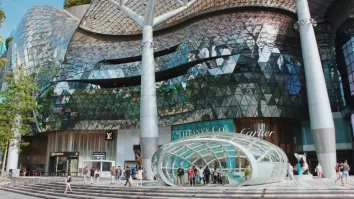
Brick-and-mortar stores catch up as spending shifts from online to offline
More than 71% of retailers in Asia Pacific plan to expand or add new stores in 2023, according to CBRE retail survey.
Online stores have expanded aggressively in recent years, leading the industry to question the future of brick-and-mortar stores; but CBRE found that fewer than 5% of consumers in the Asia Pacific shop purely online, proving that it is not over yet for physical stores.
In its 2023 Asia Pacific Retail Flash Survey, CBRE found that nearly half of the retailers in the region expect a portion of online spending to be shifted to physical retail and 42% see that footfall in physical stores will return to its pre-pandemic levels.
“One very important fact is that fewer than 5% of consumers purely shop online. There is a huge range of hybrid shoppers, who have different shopping behavior,” Ada Choi, CBRE’s head for occupier research and intelligence and management in APAC, told Retail Asia.
“This is also a challenge for the brands that have to cater to different shoppers’ behavior switching between online and offline and be able to address those issues.”
New generation of physical stores
CBRE found in the same survey that operating online retail platforms are increasingly becoming expensive, driven by higher transportation costs, supply chain disruptions, and labour shortages. In addition to this, Google has increased its cost-per-click fee by 15% in 2021 which was particularly detrimental to smaller retailers.
For these reasons, 66% of retailers project that it would be costly to operate online businesses this year. Moreover, 71% of retailers are planning to expand or add new stores in 2023, whilst only 15% have plans to right-size.
“I think for the new generation of physical retail stores, they have to support online shopping, and fulfill other very interesting demand from the shoppers – Instagrammable or more social media-friendly kind of elements,” said Choi.
The CBRE survey also showed that whilst the younger generation is more tech-savvy, the majority of them are more likely to shop offline as they represent the market that looks out for potentially creative social media posts.
Choi added that interestingly, 61% of shoppers in the region prefer to see products in-store before ordering online, which she linked to the more condensed living environment in the Asia Pacific. This is also higher than in Europe and the Americas – yet another proof that physical stores are here to stay, she said.
“It is easier for us to go to the shopping centers and take a look at the product… The reason for going to an offline store is always about expertise, the experience… and [because] they need to feel the product,” Choi said.
“I think this also makes it very important for the retailers to continue to optimise their sales network and be able to assess their consumers in different parts of the market,” she added.
Retail investment outlook
Physical retail stores have started to stabilise in the latter part of 2022, and investments in the sector have improved. Choi, however, noted investment sentiments in retail are still behind other sectors, such as the office and industrial markets.
In this light, CBRE projected a “largely flat” investment volume during the year. “There are quite a lot of uncertainties. For example, the volatility in the financial markets, and the concerns about the banking sector. This will also affect the investment sentiment as a whole and therefore also the retail investment,” said Choi.
“Another investment driver is the interest rate environment. As we note, the US has had the steepest increase in interest rates in the past year. At this moment, people are expecting the interest rate to peak within the middle of this year and if this happens, the sentiment will improve after we hit that peak. Let’s hope for this to come earlier,” she added.
Retail investments have been led by markets that reopened their borders early on, including Australia, Singapore, and Japan. Japan is amongst the most preferred markets as it is not affected by high-interest rates.
Also, Hong Kong may be in the running as it rebounds after reopening alongside Mainland China, added Choi.

















 Advertise
Advertise







